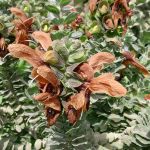| Common Name: |
Blue Sage |
| Other Names: |
Cleveland Sage |
| Botanical Name: |
Salvia clevelandii |
| Genus: |
Salvia |
| Family: |
Lamiaceae |
| Native Location: |
California |
| Cultivation: |
Well-drained to dry, neutral to alkaline soil in sun. Salvia miltiorhiza needs moist, sandy soil; tolerates partial shade. Most sages dislike damp conditions and low light in winter; they are often hardier in dry, sunny positions. Sages grown in a greenhouse are prone to spider mite, aphids, and whitefly. Many sages become woody and sparse with age and should be replaced every 4-7 years. |
| Propagation: |
By seed sown in spring (species and annuals only); by basal or softwood cuttings in spring and summer; by semi-ripe cuttings in late summer and early autumn; by division (S. miltiorhiza). Salvia lyrata, S. sclarea and S. viridis may self-sow freely. Salvia greggii is grown as an annual in areas with cold winters. |
| Harvest: |
Leaves are picked for immediate use, or before flowers open for oil distillation and drying; dried leaves are used in infusions, liquid extracts, and tinctures. Roots are lifted in late autumn and winter, and dried for pills, decoctions, and tinctures. Ripe seeds are dried for use in macerations, or pressed for oil. Flower spikes are cut in summer. Galls (S. pomifera) are picked in spring, and candied. |
| Height: |
1.2m (4ft) |
| Width: |
1.2-1.5m (4-5ft) |
| Hardiness: |
Z8-10 |
| Parts Used: |
Leaves. |
| Properties: |
An aromatic herb with a strong, resinous flavor. The volatile oil contains thujone. |
| Culinary Uses: |
Fresh or dried leaves are used as a substitute for S. officinalis with strongly flavored or rich foods, such as pork, duck, goose, game, sausages, and cheese dishes. |
| Aromatic Uses: |
Dried leaves may be added to potpourris. |
| Bibliography: |
Encyclopedia of Herbs by Deni Brown Copyright © 1995, 2001 Dorling Kindersley Limited. pp 353-354 |

